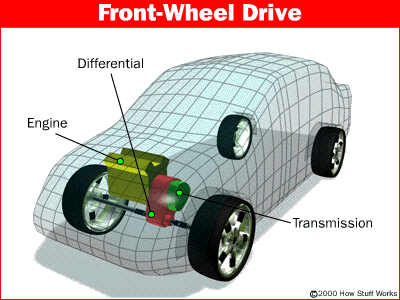Locking and Tor sen
The locking
differential is useful for serious off-road
vehicles. This type of differential has the same parts as an open differential,
but adds an electric, pneumatic or hydraulic mechanism to lock the two output
pinions together.
This mechanism is usually activated manually by switch, and
when activated, both wheels will spin at the same speed. If one wheel ends up
off the ground, the other wheel won't know or care. Both wheels will continue
to spin at the same speed as if nothing had changed.
The Tor sen differential* is a purely mechanical device; it
has no electronics, clutches or viscous fluids.
The Tor sen (from Torque Sensing) works as an open differential when the amount of
torque going to each wheel is equal. As soon as one wheel starts to lose
traction, the difference in torque causes the gears in the Tor sen differential
to bind together. The design of the gears in the differential determines the torque bias ratio. For instance, if a particular Tor sen differential is
designed with a 5:1 bias ratio, it is capable of applying up to five times more
torque to the wheel that has good traction.
These devices are often used in high-performance
all-wheel-drive vehicles. Like the viscous coupling, they are often used to
transfer power between the front and rear wheels. In this application, the Tor sen is superior to the viscous coupling because it transfers torque to the
stable wheels before the actual slipping occurs.
However, if one set of wheels loses traction completely, the Tor sen differential will be unable to supply any torque to the other set of
wheels. The bias ratio determines how much torque can be transferred, and five
times zero is zero.



















.jpg)
